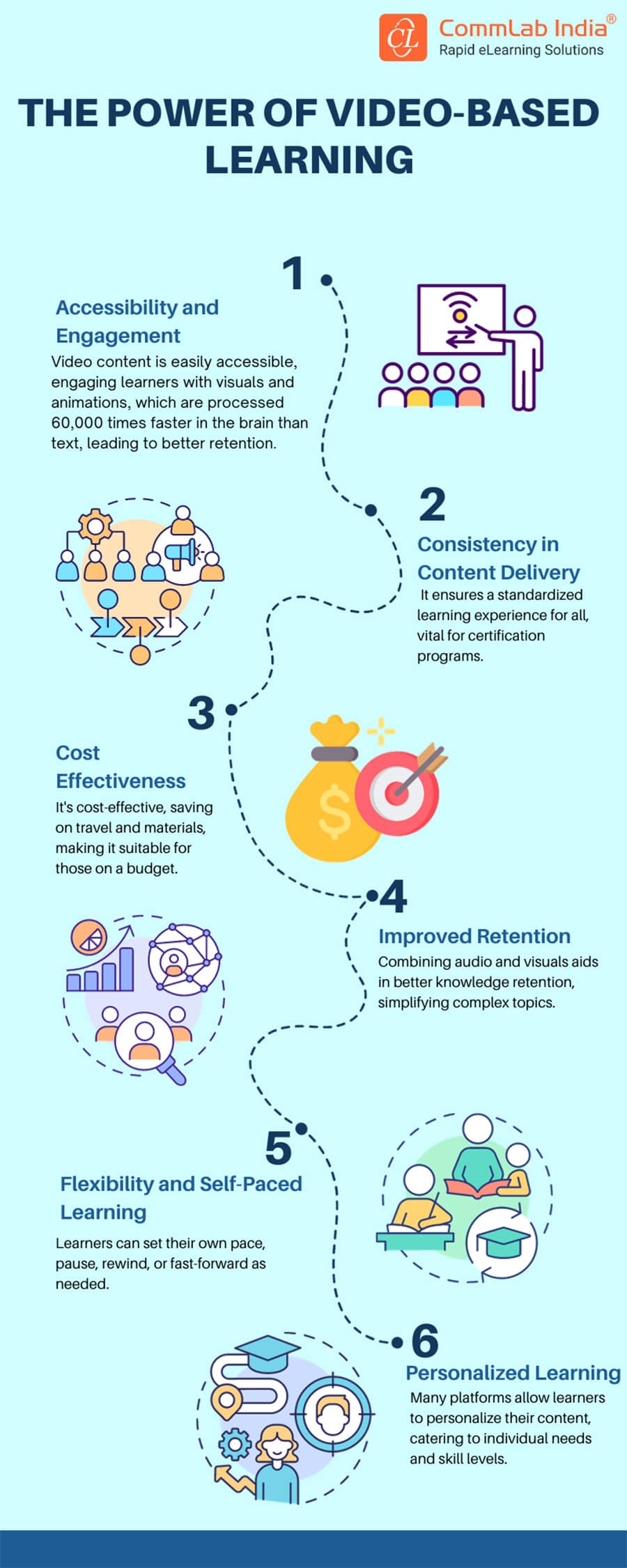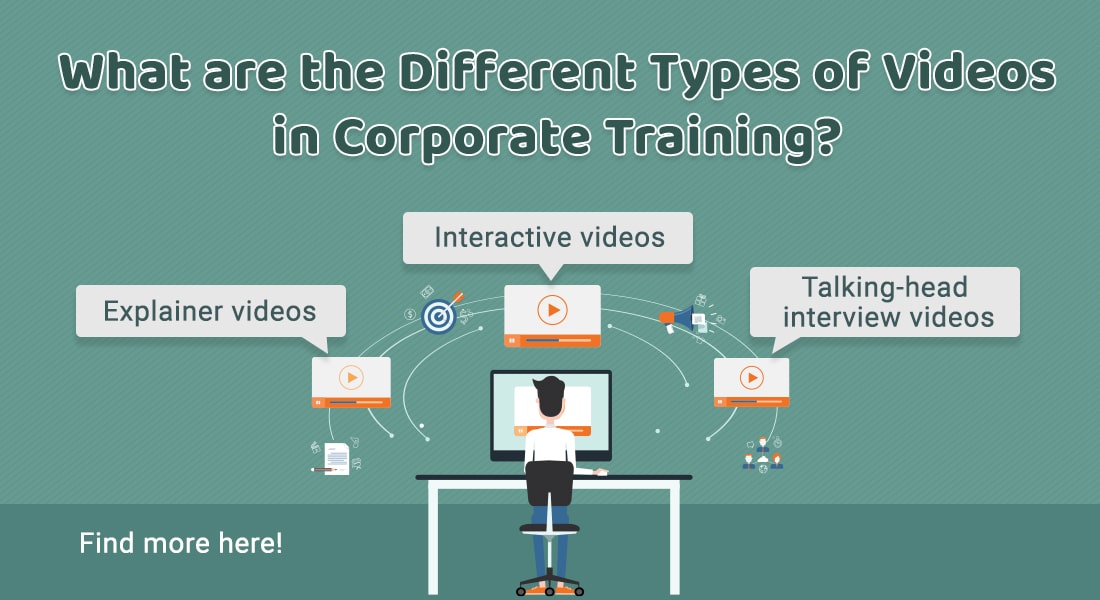5 Best Practices to Unleash the Power of Video-based Learning [Infographic]
![5 Best Practices to Unleash the Power of Video-based Learning [Infographic] 5 Best Practices to Unleash the Power of Video-based Learning [Infographic]](https://blog.commlabindia.com/hubfs/blogs/video-based-learning-power-corporate-training-infographic.jpg)
Video-based learning in corporate training is becoming a boom, driven by the fundamental premise of "Show them WHAT to do and HOW to do it." It leverages the versatile attributes of videos, allowing learners to exercise control over their learning journey. The ability to play, pause, and rewind videos provides a self-paced learning experience that aligns seamlessly with the preferences and learning styles of modern learners. The visual and auditory elements woven into videos not only facilitate learning but also cater to diverse learning preferences.
Power of Video-based Learning
5 Best Practices to Unleash the Power of Video-based Learning
Use Videos to Supplement Other Training Methods
Integrate video-based learning with Virtual Instructor-led Training (VILT) or blended learning approaches to improve the overall learning experience. When used in conjunction with VILT or blended learning, videos give learners a well-rounded approach to learning and skill acquisition. For instance, videos in VILT sessions can be used to illustrate complex concepts, showcase practical demonstrations, or provide additional context to what's discussed in the live training sessions.
→ Download Now: Explore the Magic of Video-based Learning [Infographic]
Align the Videos with Learning Objectives
It's important to ensure that the videos presented to learners or integrated into the training program align seamlessly with the learning objectives. For example, if the primary learning objective is to enhance customer service skills, the videos should feature scenarios, role-plays, or case studies that directly relate to customer service challenges and solutions. To avoid diverting learners' attention, any content that does not directly contribute to the learning objective should be reconsidered or omitted. It assists them in connecting the video content to the core skills or knowledge they are expected to gain, making the training more meaningful and impactful.
Offer Responsiveness
To maximize the accessibility and reach of video-based learning, it's crucial to ensure that these video resources are compatible across multiple devices from smartphones and tablets to desktop computers. This accessibility not only improves the learning experience but also meets the expectations of the modern learner for flexibility. It enables learners to seamlessly transition between devices, allowing them to resume their training where they left off, whether on the go or at their workstations.
Track Learners' Progress and Provide Feedback
Instructors and trainers can gain valuable insights into the performance by tracking how learners interact with video content. Tools and analytics can reveal which sections of a video are watched the most, where learners rewind or pause, and whether they watch the entire video. This data is used to tailor the learning experience. Furthermore, providing feedback is critical. Learners can utilize video platforms to ask questions or participate in discussions, creating a two-way communication channel. This direct involvement improves the learning experience and ensures that learners receive the support and guidance they require to meet their training goals.
Include Interactive Elements
Incorporating interactive elements within video-based learning is a powerful strategy to maintain learner engagement and enhance the learning experience. Interactive videos encourage active participation and learner engagement. Elements like quizzes, polls, clickable hotspots, and branching scenarios can transform passive watching into an immersive learning journey. By including interactive features strategically throughout the video, learners are prompted to pause and respond to questions or make choices based on the presented content.
Consider Diversity and Inclusivity
To create effective and engaging content that resonates with a broad audience, it's crucial to reflect the diverse backgrounds, experiences, and languages of your learners. Ensure that the video content includes a diverse range of characters, voices, and cultural perspectives. This not only promotes a sense of belonging and representation but also enhances the learning experience by catering to a larger demographic. Additionally, consider the importance of eLearning translation and localization for a global audience. Providing subtitles, captions, or multiple language versions of your video-based content is a key practice for inclusivity. It allows learners from various linguistic backgrounds to access and comprehend the material effectively. By embracing diversity, inclusivity, and translations, you maximize the impact of video-based learning and create a more equitable learning environment for all.
Summing it up!
Videos have truly transformed the learning landscape in corporate training. They have the remarkable ability to simplify complex concepts and engage learners visually, making the process of learning accessible, easy, and enjoyable. Videos cater to diverse learning styles, ensuring that a broader audience can connect with and absorb the content. What sets video-based learning apart is its self-paced nature, allowing individuals to learn on their own terms. The versatility of videos across devices makes learning flexible and accommodating to a variety of schedules. Want to gain more insights about video-based learning? Here's an infographic to help you with that. Download it right away and learn about the true potential of video-based learning!




![Video-based Learning — The Go-to Strategy for Modern Learners [Infographic]](https://no-cache.hubspot.com/cta/default/59327/01a6bcb1-79c8-44e5-ade9-be0c530d9ae3.png)


